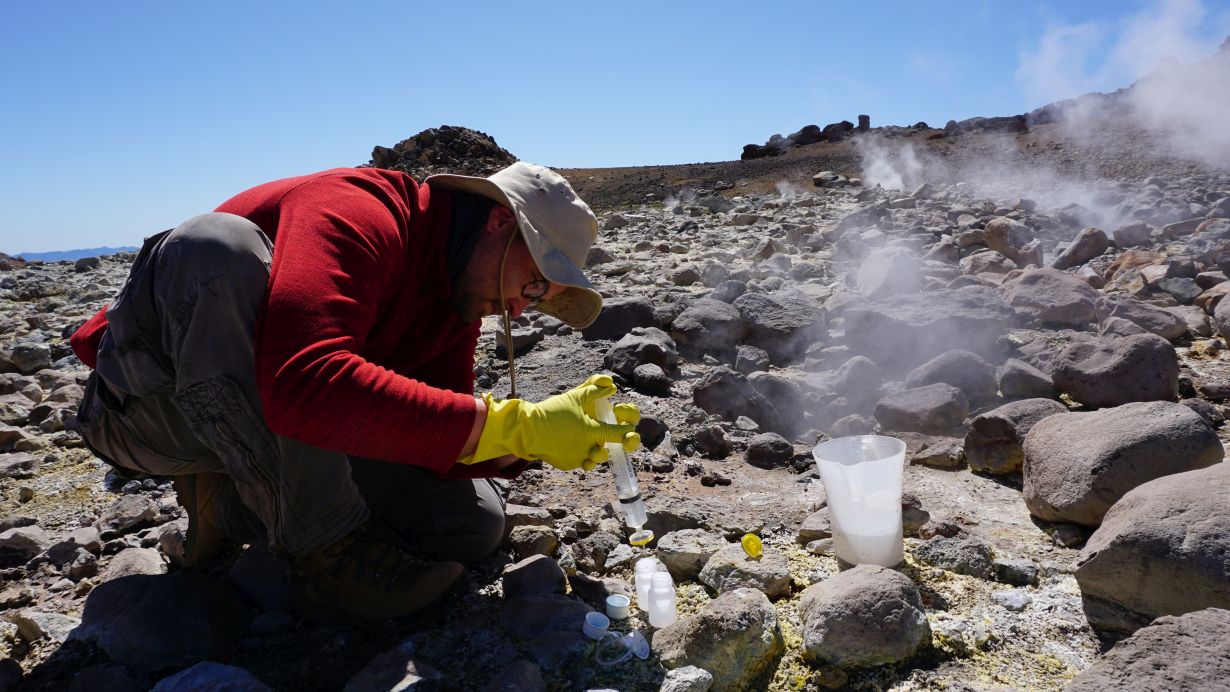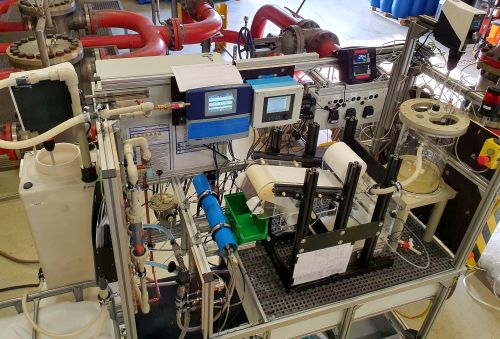
Lithium, cesium, or even gold - in addition to energy geothermal waters can contain mineral treasures. In the BrineMine research project, researchers from Karlsruhe Institute of Technology (KIT) want to leverage this potential and support sustainable mining in Chile. Together with their partners, they are developing strategies and methods for extracting mineral resources directly in geothermal power plants. Here, not only energy and minerals are to be extracted, but also drinking water. Important process steps have already been successfully tested in a demonstration plant.
Mineral resources from Chile are of great importance to Germany. According to statistics from the World Bank, thousands of tons of valuable minerals are imported from the South American country every year, including raw materials for lithium-ion batteries. But their extraction causes ecological and social problems: "The use of the limited freshwater resources in northern Chile for mining regularly fuels conflicts with the local population," says Professor Thomas Kohl from KIT's Institute of Applied Geosciences (AGW). "Northern Chile is one of the driest regions on earth, but has extensive geothermal resources. With a novel type of plant, it is not only possible to generate electricity in a climate-friendly way, but also to extract drinking water and even mineral resources at the same time." The AGW team of BrineMine, a German-Chilean research project, is developing the necessary strategies and technologies.
AGW has a long history of cooperation in the field of geothermal research in Chile. Its main partner is the Centro de Excelencia en Geotermia de Los Andes (CEGA). "BrineMine demonstrates how well the cooperation between Chilean and German institutions works," says Professor Diego Morata, director of CEGA. "Sustainable development, achieved by the combination of geothermal and green mining, can benefit Europe and the Andean region alike."
First Demonstration Plant on the Upper Rhine Graben
Part of the transdisciplinary research initiative is dedicated to the geochemical and geothermal potential of thermal wells in Chile in order to identify suitable sites. A data survey is being conducted to determine the raw materials potential with a focus on the thermal fields of the Atacama Desert. In addition, the Fraunhofer Institute for Solar Energy Systems (ISE) takes part in the BrineMine project by developing the plant technology for later industrial use. It is based on a novel process chain: First, heat from the geothermal brine is used for energy recovery. The cooled liquid, which has a relatively low concentration, is then pre-concentrated by reverse osmosis; at the same time, drinking water is obtained. The brine concentrate is then further concentrated by membrane distillation until it is saturated. "The thermal energy required for the entire process can be covered directly from the excess heat of the power plant process," explains project manager Dr. Joachim Koschikowski from ISE. "We have already set up a demonstration plant in a geothermal power plant in the Upper Rhine Graben and successfully integrated key components into ongoing power plant operations."

In a geothermal power plant in the Upper Rhine Graben, key components have already been successfully tested in a pilot plant. (Photo: Valentin Goldberg, KIT)
Optimization of Processes for Raw Material Mining
Most of the process steps are based on proven methods, but they have never been combined in this way. Detailed research is required, because, for example, both concentration and cooling increase the risk of silicate deposits. "Conventional strategies for silicate removal would greatly impair the extraction of the resources. Without water treatment, the technical plant components would be damaged," explains Valentin Goldberg from KIT's AGW. The researchers found a viable solution by changing the pH value of the brine and adding divalent cations (e.g. calcium or magnesium). "Our silicate removal method is fast and effective. Most importantly, it has no negative impact on raw material extraction," Goldberg says. The researchers describe this new approach in the Geothermics journal.






